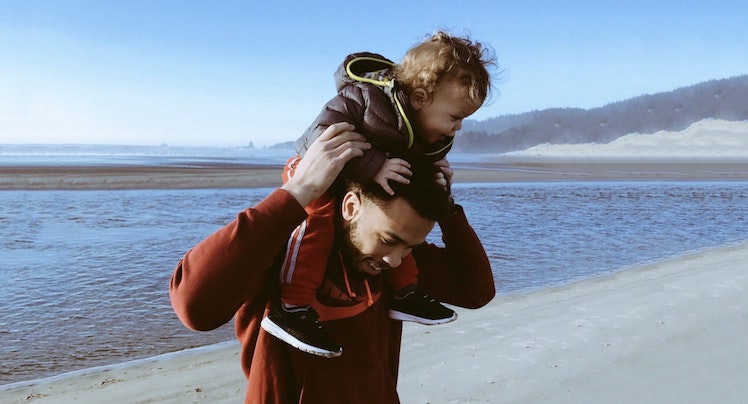By Sandy Wiegand, Copyeditor and Writer at Joining Vision and Action
Did you know that about 26 percent of post-secondary students across the country have children of their own?
That’s not the portrayal of the American college student I’m used to. As they juggle school, work and childcare, these students have much tougher questions on their minds than where to spend spring break.
Last November, I attended the Colorado Statewide 2Gen Conference as part of a JVA team compiling a report for the Governor’s Office. The student-parent statement was just one I heard at the conference that was a revelation to me. And higher education is just one arena where the necessity of two-generation (2Gen) approaches is becoming obvious.
2Gen Approach

Click on the photo for Sandy’s first blog on the conference! Heard of 2-Gen? Colorado Just Keeps Innovating
I wasn’t familiar with the term “2Gen” for long before the conference, but it’s a concept that makes perfect sense the moment you hear it described. Simply put, the 2Gen approach means that when an organization or agency serves one family member, it also evaluates and addresses the needs of that person’s parents and/or children. The conference, which had about 200 attendees, sought to take the next step in embedding 2Gen as a framework for all social service efforts in the state. The Governor’s Office recently released JVA’s report, and you can check it out at the Colorado Two-Generation Approach website.
Colorado has already been ahead of the curve in adopting 2Gen approaches. The state government’s early efforts led to Colorado being one of just five states chosen to participate in the Parents and Children Thriving Together: Two-Generation State Policy Network (PACTT Network). PACTT is a peer-learning network sponsored by the National Governors Association and the Center for Law and Social Policy. Membership gives Colorado access to technical assistance and other resources to help expand 2Gen approaches across the state.
Panels and Workshops
The conference panels and workshops I attended were wide ranging in focus and gave me plenty of food for thought. My guess is that a lot of what I learned is old news to people immersed in 2Gen strategies. But for me, much of the information and many of the ideas were striking. So today, I’m sharing a few takeaways that stood out to me, in hopes they might get other novices thinking, too. Here’s my list, from one nonexpert to others:
- Healthcare access plays only about a 10 percent part in determining a person’s health, Colorado’s deputy chief medical officer and director of public health programs, Dr. Tista Ghosh, noted. Healthcare access saves lives. But factors such as income, neighborhood, race, gender, access to healthy food and access to transportation add up to a degree that we cannot afford to ignore them. Children who lack resources today are likely to have health issues in the future. (Learn more about social determinants of health from the Centers for Disease Control and Prevention.)
- 2Gen approaches can sometimes reach parents who are reluctant to seek help for themselves. One dad at the conference described how he was diagnosed with and treated for depression after a social service organization engaged him at his son’s Head Start preschool. Suicide rates and substance abuse deaths are high for working-age men, and the Centers for Disease Control and Prevention says men are far less likely than women to receive preventive services.
- Barring felons from public housing can backfire. The practice varies, but what might sound like a good way to keep residents safe and reduce “bad influences” can increase recidivism. Family connections tend to increase stability for people leaving prison.
- “Navigators” play an outsized role for people receiving services. Repeatedly throughout the conference, the importance of having a steady, friendly guide through and across services was reinforced. Without this guide, individuals can be overwhelmed by fear and/or lack of knowledge. Think of it like having a friend or coach at your side every time you want to try something new. Sounds reassuring, right? In the best-case scenario, navigators grasp how parents’ and children’s needs intersect.
- Nonpunitive remedies for child support nonpayment can improve repayment rates and improve relationships. Some programs have become more proactive in trying to predict when a noncustodial parent is likely to have difficulty making payments, and in helping address the underlying causes. These interventions can benefit both parents and children.
- Positive change becomes embedded when former clients become leaders. This can mean membership on nonprofit boards, employment within organizations or other avenues. Ideally, organizations are built by the community from the start. When this is not the case, well-meaning outsiders must know when to step aside and let community members take the helm.
The last point reflects a broader recurring theme from the conference: Hear the people whose needs you aim to meet, and believe them when they describe their needs. Sometimes the answers are simpler than you expect.
Curious what other great ideas are out there?
You can read the 2Gen Statewide Conference Summary Report and The Colorado Guide to 2Gen, subscribe to 2Gen updates and more at the Two-Generation Approach website.







Leave A Comment